Since I returned from a recent trip to Denver, I have been telling everyone I meet about an amazing, high-energy workplace I visited there — the two-story headquarters of Gusto, an online payroll and benefits company. Apparently, the ebullience of this work environment is intentional, as I learned when I did some background research on Gusto. Their company mission statement states their belief that when businesses treat their employees like people, work becomes a source of energy rather than a fatigue. With the help of IA Interior Architects, mission accomplished!
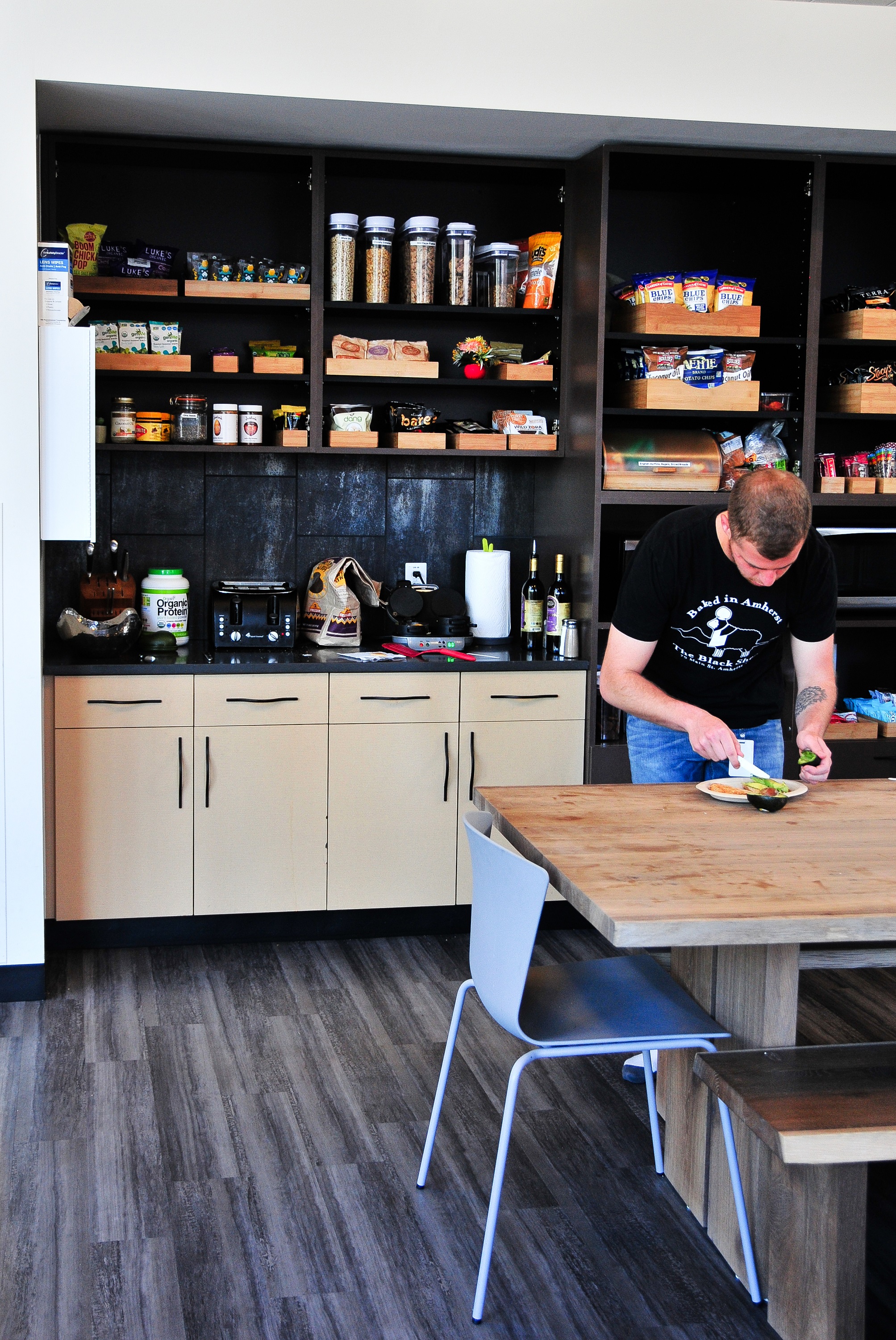 According to the IA team, Gusto was founded in 2011 in founder Joshua Reeves’ parents’ San Francisco basement and the Gusto management wanted to reflect that scrappy origin in a space with a slightly more professional polish.
According to the IA team, Gusto was founded in 2011 in founder Joshua Reeves’ parents’ San Francisco basement and the Gusto management wanted to reflect that scrappy origin in a space with a slightly more professional polish.
The Back Story
Gusto selected a 30,000 square foot space in a former shopping mall on 16th street in downtown Denver. Because the space had been retail, it was not move-in ready for office occupancy. (In fact, the escalators are still in place, although their days may be numbered.) As Gusto is a growing company, they did not want to spend all of their capital building out expensive space so the mandate for the architectural team was to be creative with existing finishes and fixtures.
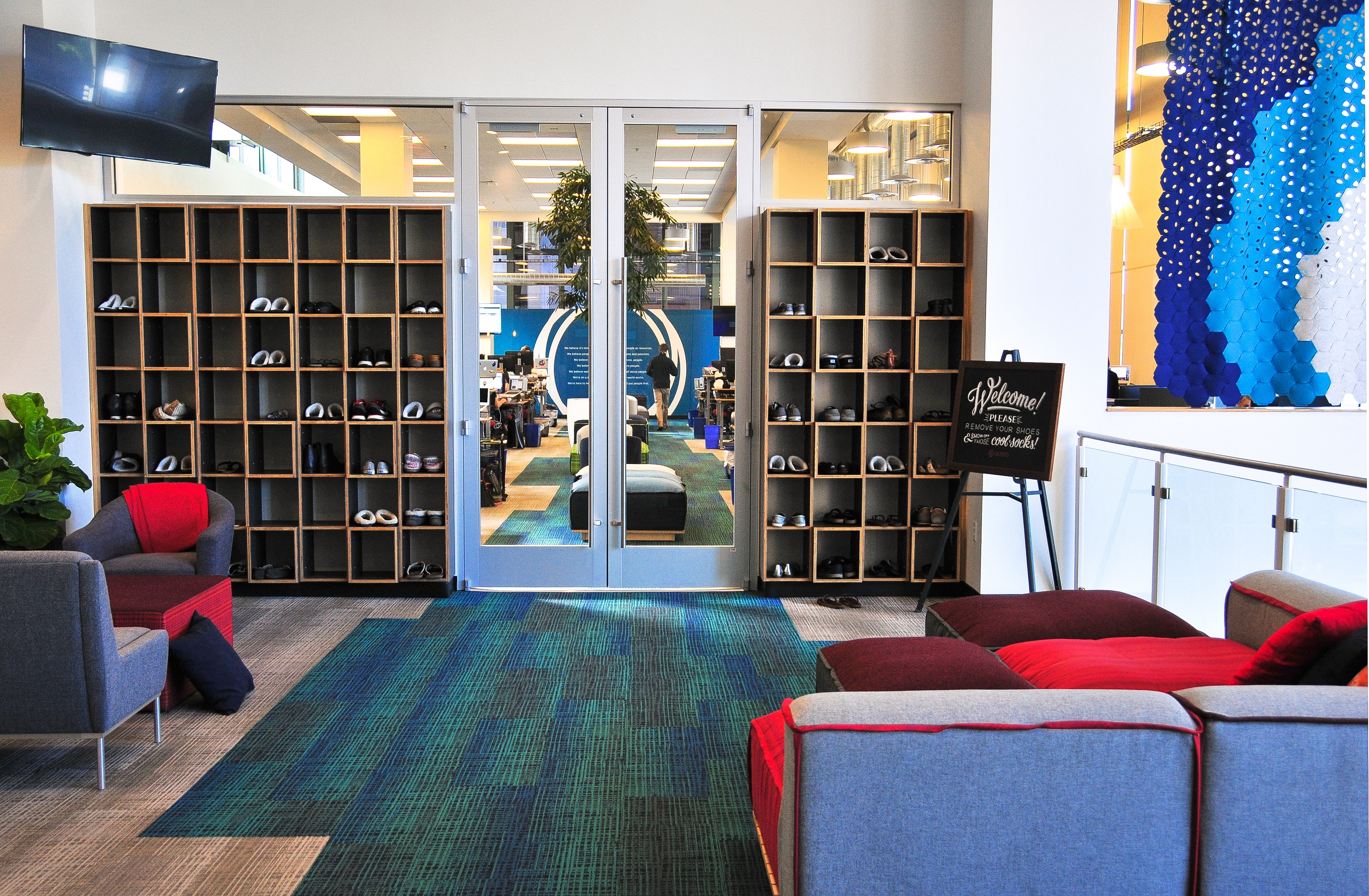
Creative Cost Control
IA kept the budget low through some creative solutions to the problems that arise in second generation space. In order to avoid using core drilling to bring power to work stations, they built half-height (“pony”) walls at existing power sources and ran the power out from those. They reused light fixtures and exterior wall finishes. They removed walls and dropped ceilings to take advantage of skylights and bring as much light as possible into the space. Finally, they used inexpensive solutions like graphics and paint to reflect the company culture. For example, on one wall, there is a giant map of Denver where employees can pin or post notes identifying good restaurants, hiking trails, shopping, etc. Together, these creative approaches helped bring the total build-out cost in under budget.
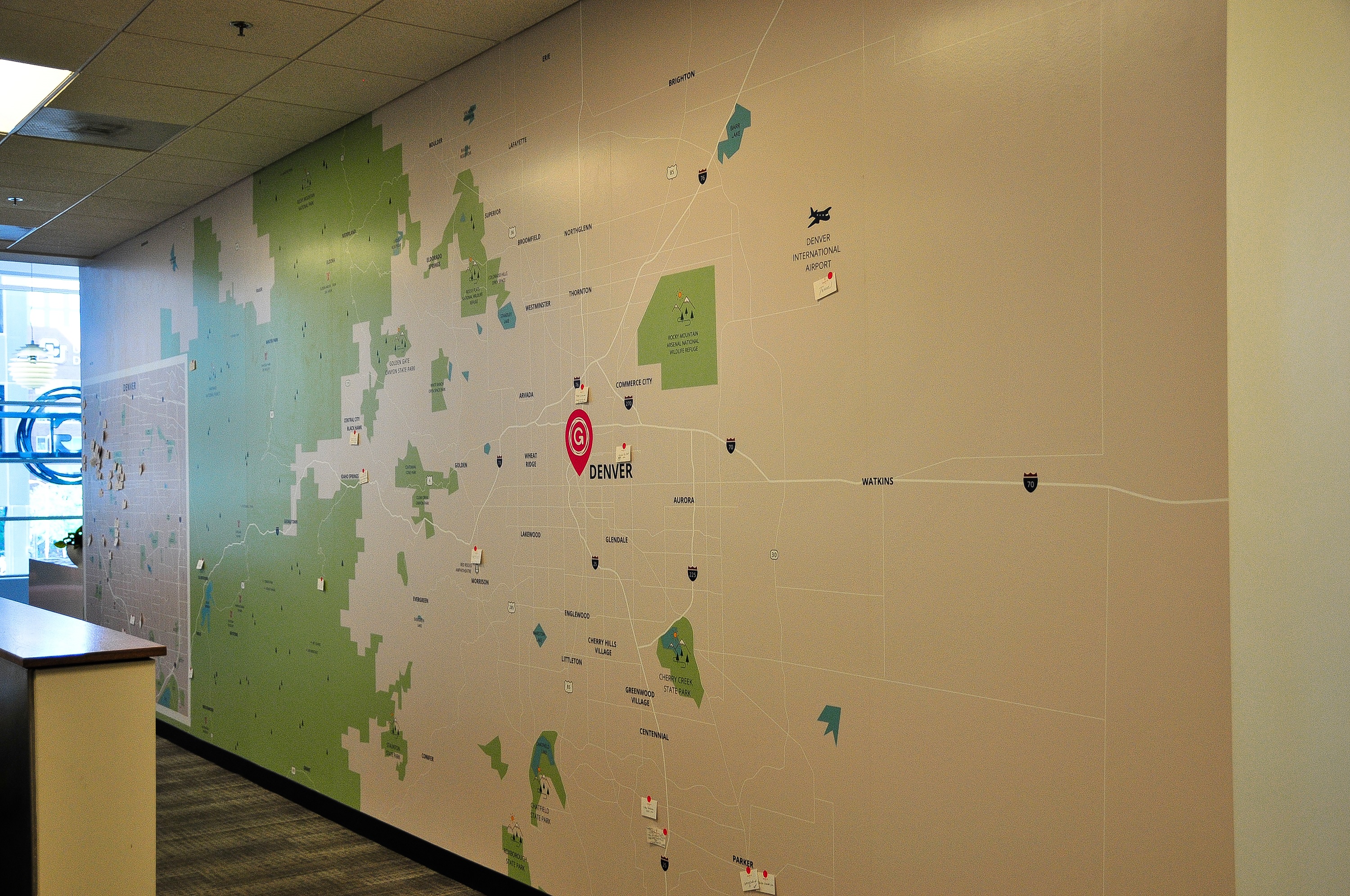
Open Plan
In addition to the direction on budget, Gusto asked that the space be completely open plan. Consequently, no one has an office, although there are booths, phone rooms, and huddle rooms for teaming or quiet work. And – perhaps my favorite thing about Gusto – they have a shoeless culture. Yep. No shoes. Socks? Sure. Slippers? Fine. Shoes? Not a chance. As a result, when you walk into their lobby, you see a wall of cubbies where employees and visitors alike leave their shoes before entering the office.

The Results
As a real estate advisor, I don’t know the psychology behind it, but this facet of Gusto’s culture has an immeasurably large effect on the energy level in their space. Maybe it’s hard to be in a slump when you are surrounded by people in unicorn slippers or pink argyle socks. That’s my theory. Regardless, I walked into their kitchen area at about 9 am and was surrounded by a crowd of people chatting and making their breakfasts.
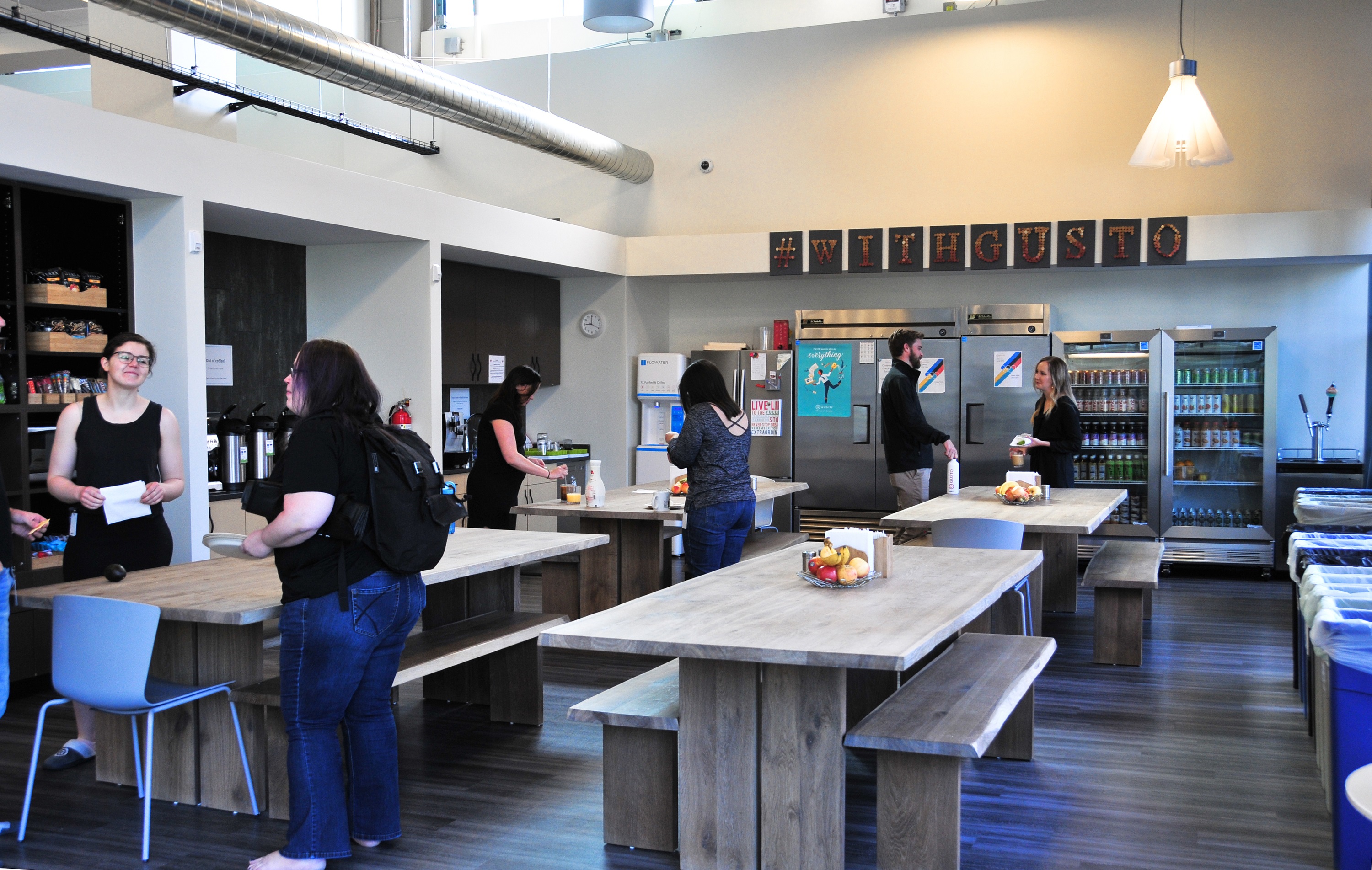 This congenial vibe continued outside of the kitchen into the space. There was a soft undercurrent of chatter and laughter and likely, as a result, collaboration, throughout the office. The space includes bike storage, foosball, soft seating and yoga mats so employees can take whatever kind of mental break restores their productivity. None of these amenities is expensive yet all of them contribute greatly to employee health and happiness.
This congenial vibe continued outside of the kitchen into the space. There was a soft undercurrent of chatter and laughter and likely, as a result, collaboration, throughout the office. The space includes bike storage, foosball, soft seating and yoga mats so employees can take whatever kind of mental break restores their productivity. None of these amenities is expensive yet all of them contribute greatly to employee health and happiness.
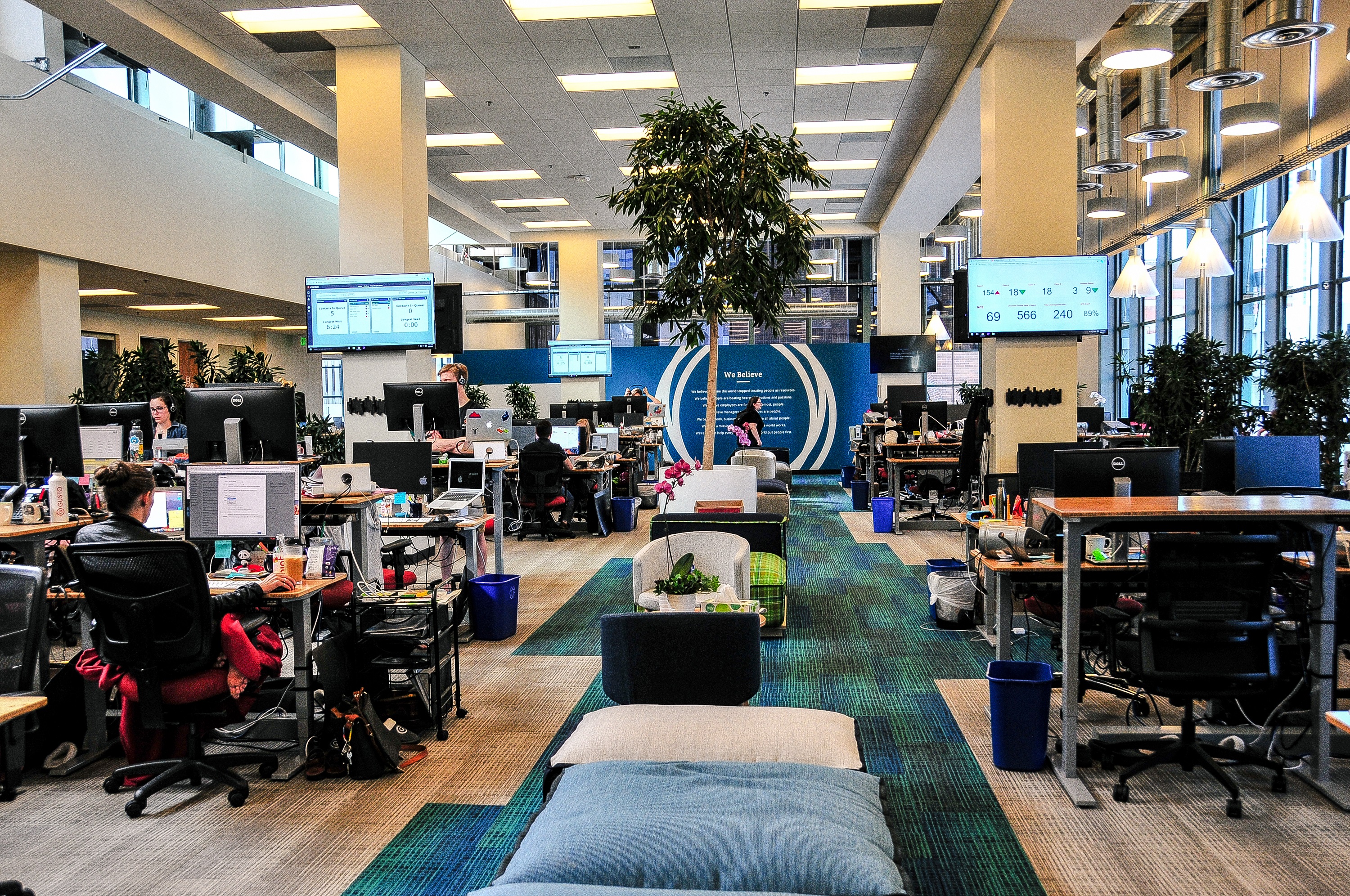 My takeaway from my Gusto visit: you can build great space anywhere and you can do it on a budget. This means you can lease an ultra-hip historic building in the urban core or a rundown former mall in suburbia and make it great. (Some great examples here and here and here.) Great space just has to reflect and promote a great company culture. And a good architect/broker/client team can make that happen.
My takeaway from my Gusto visit: you can build great space anywhere and you can do it on a budget. This means you can lease an ultra-hip historic building in the urban core or a rundown former mall in suburbia and make it great. (Some great examples here and here and here.) Great space just has to reflect and promote a great company culture. And a good architect/broker/client team can make that happen.

[…] Through planning and training and enclosed space options, open plan can be a positive experience for your company and its employees. To read about tech company Gusto’s positive experience with open plan, click here. […]